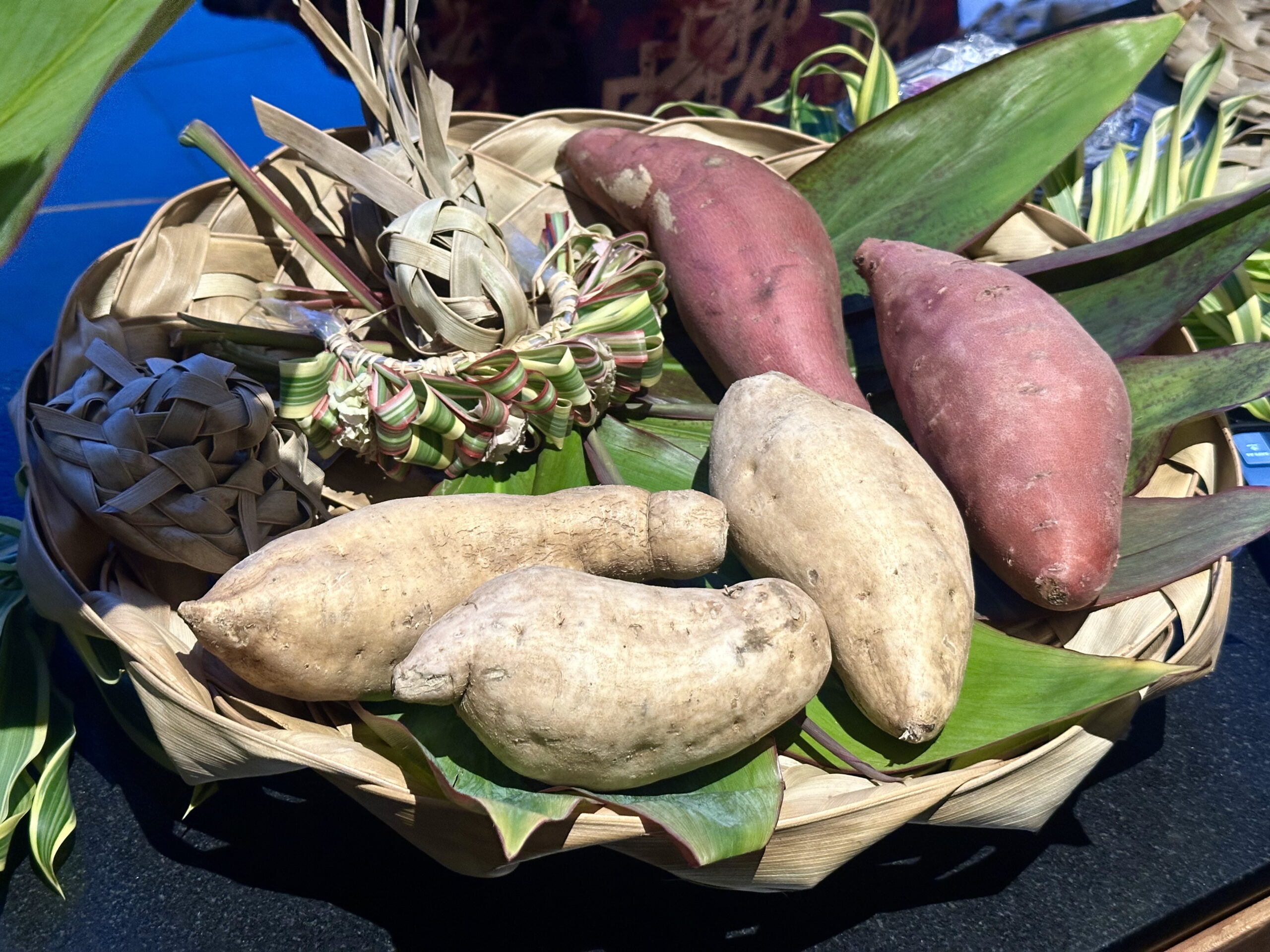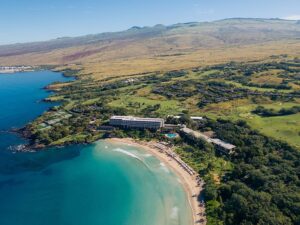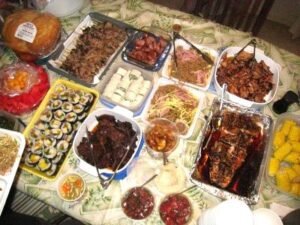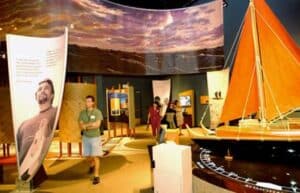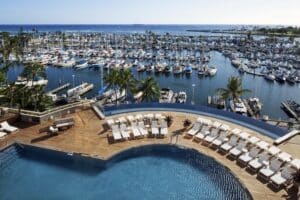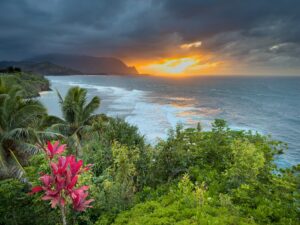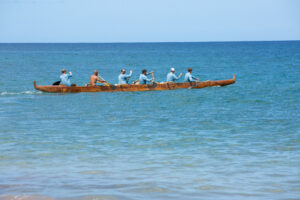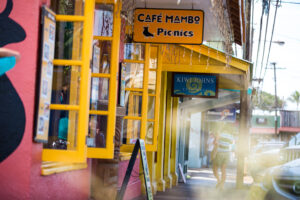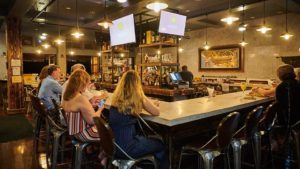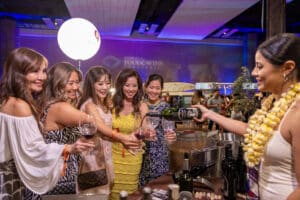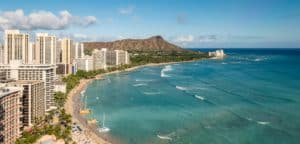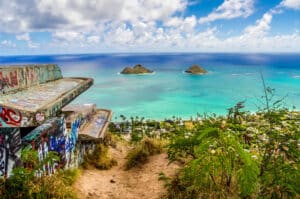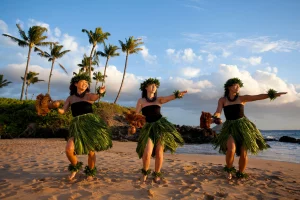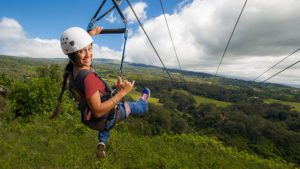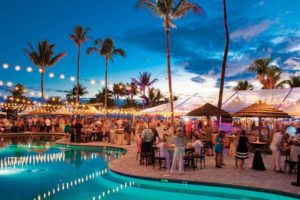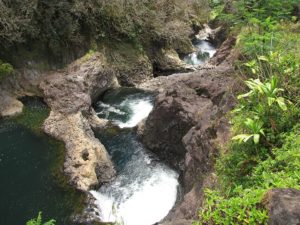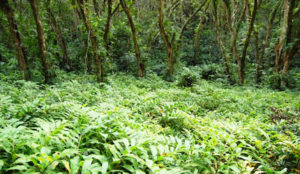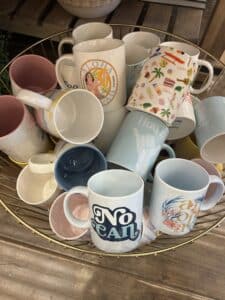
To make Hawaiian pa’i’ai or poi kalo (taro) is steamed and pounded with water. Courtesy of Hawaii Tourism Authority. Photo by Heather Goodman.
This article contains affiliate links.
Curious about traditional Hawaiian Food? While most visitors think of shave ice, pineapple and musubi as Hawaiian foods, they are not. These came hundreds of years after Hawai’i was discovered by Polynesians settlers and are considered “local food,” as opposed to Hawaiian. Even poke, as we know it today, was developed long after Hawaiʻi became a part of the U.S.
What are Hawaiʻi canoe crops?
When we think about traditional Hawaiian food today, we are referring to “canoe crops” – staple foods that were brought to the Hawaiian Islands over 1000 years ago by canoe – which include ingredients such as kalo (taro), ʻulu (breadfruit), niu (coconut), maiʻa (banana), ʻuala (purple sweet potato) and ʻōlena (turmeric) just to name a few.
Canoe crops were more than just sustenance to Native Hawaiians. They were used for clothing, shelter, medicine and rituals. ʻUlu is a symbol of food security, while kalo – the most important of the canoe crops – is considered the ancestor of all Hawaiian people.
Although Native Hawaiians have grown these crops for centuries, they are not always easy to find in grocery stores or on restaurant menus. But seeking them out provides not only the reward of learning more about Hawaiian culture, it’s also an opportunity to taste something new and delicious.
Why Trust My Advice?
I am not Native Hawaiian, nor am I a cultural practitioner. I am a food writer and former chef who has been cooking and learning about the foods of different cultures around the world for almost 30 years. The first thing I did when I moved to Hawaiʻi nine years ago was start a project called the “Year of Ingredients” where I chronicled a different local Hawaiʻi ingredient every day for a year straight. In my research I learned where to source these ingredients, how to cook them and what their medicinal benefits were. During that time, I began touring local farms, leading farmers market tours and hosting farm-to-table dinners on Oʻahu. Continuing down the rabbit hole eventually led me to volunteering regularly with ʻāina-based organizations, and farms, islandwide that grow traditional Hawaiian crops, and becoming an ʻulu ambassador for the Hawaiʻi ʻUlu Cooperative – a local non-profit I have written articles and guides for and developed recipes and products for utilizing canoe crops. Locals know me best as “The Healthy Locavore” – my IG handle and name of my blog – someone who is passionate about personal and environmental health, local agriculture and supporting local businesses. After 10 years of writing about food and travel for publications nationwide, I still find the most joy in writing about the foods of Hawaiʻi.

You can find canoe crops like kalo and ʻulu at produce markets in Chinatown on Oʻahu. Photo by Ketino Photography.
Where can I learn more about Hawaiʻi canoe crops?
If you are interested in learning more about Hawaiian staple foods, there are several ways to go about it.
Learn Before You Taste
- Cultural Centers: Places like the Polynesian Cultural Center on Oʻahu and Maui Ocean Center on Maui offer an interactive way to learn about Native Hawaiian history and culture.
- Hotel & Resort cultural programs: The Westin Maui Resort & Spa in Ka’anapali and the OUTRIGGER Kāʻanapali Beach Resort both have robust cultural programs that will teach you all you need to know about canoe crops. Although these resorts are stand-outs they are not the only ones. For the past five years, hotels and resorts across the state have been developing cultural programs to offer their guests educational experiences. When booking your accommodations, check to see if this is part of its amenities.
- ʻĀina-based organizations: What better way to learn about food than to see how it is grown? At organizations such as Kakoʻoʻoiwi, Mānoa Heritage Center and Hoʻoulu ʻĀina (all on Oʻahu) you can volunteer in the field learning ancient Hawaiian farming practices.
- Museums: History museums such as The Bishop Museum on Oʻahu offer an in-depth look at Native Hawaiian life (pre-contact) including the history of canoe plants and how they were prepared.
Taste Hawaiʻi Canoe Crops
Maui
Seascape Restaurant
Seascape is one of the few Hawaiʻi restaurants using canoe crops. Chef Enrique “Henry” Tariga is committed to serving a hyper-local, sustainable menu at his restaurant inside the Maui Ocean Center. He also hand-selects fresh seafood caught by Māʻalaea Harbor fisherman and sources grass-fed meats from local ranches. Try the Kalo Poke Nachos, Upcountry ʻUlu Hummus, Truffle Kalo Fries, Maiʻa Creme Brulee and Mocha ʻUlu Pie.
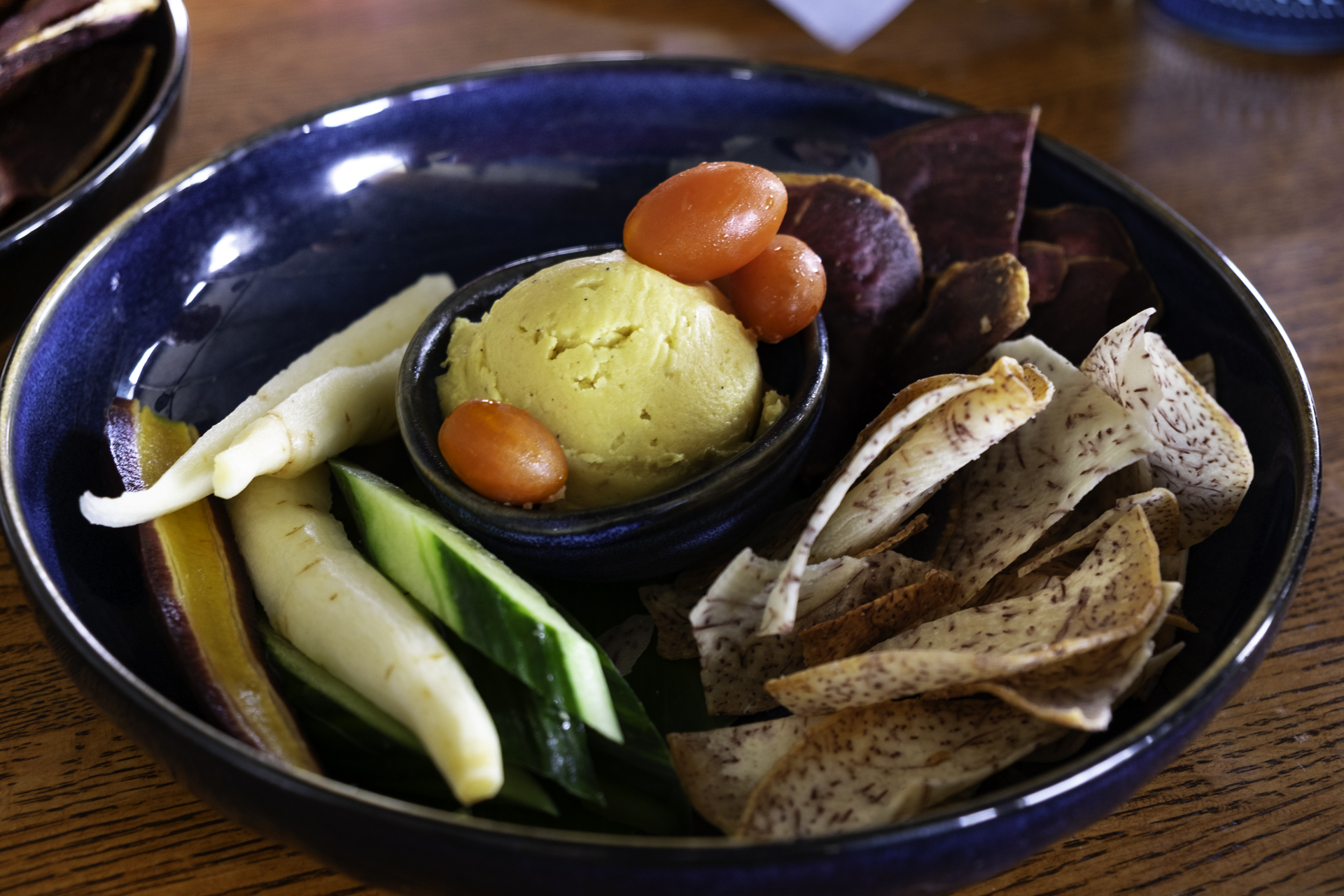
House-made ‘ulu hummus with local vegetables and ‘uala and kalo chips at Seascape Restaurant. Photo by Sarah Burchard.
ʻUlu Kitchen
Chef Peter Merriman has been serving farm-to-table cuisine in Hawaiʻi since he opened his first Merrimanʻs restaurant in 1988 on Hawaiʻi Island. He then went on to co-found the Hawaiʻi Regional Cuisine movement in 1991 with 11 other local chefs. These days, Merriman has an empire with stakes in both Merriman’s and Handcrafted Restaurants (HCR). ʻUlu Kitchen, part of HCR, is located at The Westin Maui Resort & Spa in Ka’anapali. Try the Coconut Corn Chowder (with ʻulu), Mushroom Pot Pie (with more ʻulu!) and Maui Nui Venison.

Chef Peter Merriman has been supporting Hawaiʻi farmers for over 30 years. Courtesy of ‘Ulu Kitchen. Photo by Steve Czerniak.
ʻOkoʻa Farms (Store) – ʻOkoʻa Farms got so busy at the Upcountry farmers market, owner Ryan Earehart opened a store. Inside you’ll find a wide variety of produce, meats and eggs; value-added products such as fresh pressed juices, ground spices, sourdough bread and lots of prepared foods such as cassava bowls with coconut milk, papaya and dragon fruit and taro pudding with guava. Next year, the store will be expanding into the space next door to create a cafeteria-style buffet for take-out.

ʻOkoʻa Farms boasts one of largest varieties of crops on Maui, including maiʻa (bananas shown here). Photo by Sarah Burchard
Oʻahu
Mud Hen Water – Owner Ed Kenneyʻs first Oʻahu restaurant Town just made Eater’s 38 Most Essential and Influential Restaurants in the Past 20 Years list. The honor is well deserved. Since 2005, Kenney has championed local farms on his menus, and Mud Hen Water, which opened in 2015, is no different. “Mud Hen,” as locals call it, goes a step further by incorporating traditional Hawaiian foods. Try the Pohole, Fried ʻUlu and Heʻe Lūʻau.
Fete – James Beard Award-winning chef and owner Robynne Maiʻi goes to great lengths to incorporate as many local ingredients on her menu as possible, working with over 30 local farms, ranchers and specialty vendors. Dining at Fete, “French for celebration,” is a joyous affair. The service is fun, the cocktails and wine list are some of the best on island and the bistro-style food will have you craving more. When it’s ʻulu season, try the Aloo ʻUlu. The Kulolo Ice Cream is a must.
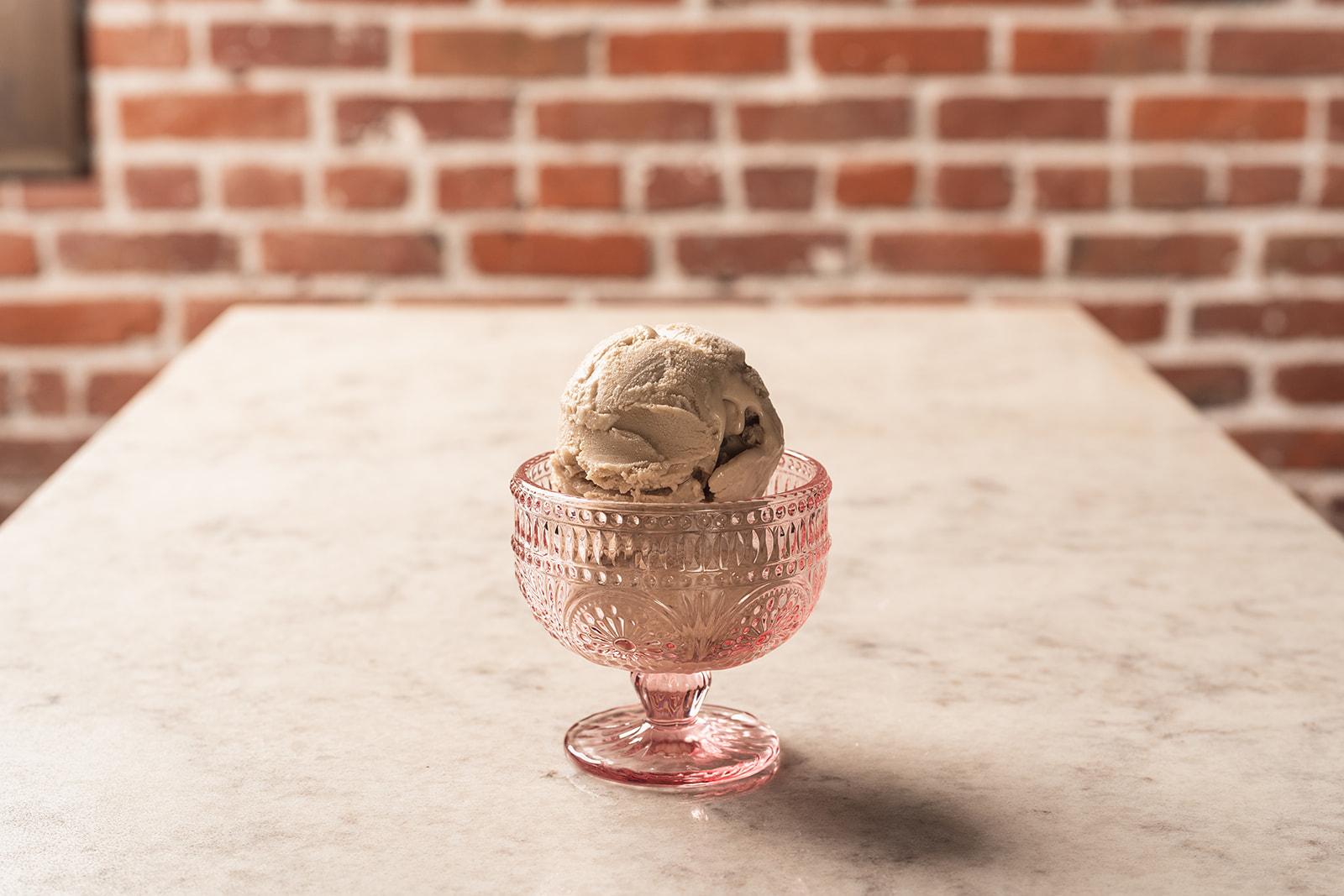
The kulolo ice cream at Fete combines locally-made poi, coconut milk and Coruba Jamaican dark rum. Courtesy of Fete Hawaiʻi. Photo by Sean Marrs.
Farmlovers Farmers Markets – There are many Hawaiʻi farmers markets selling canoe crops. You can find poi, ʻulu (when in season), maiʻa, fresh niu and many more local delights every week at farmers markets across the island. The Kakaʻako Farmers Market was voted #3 Best Farmers Market in the US by USA Today.

Find products made with Hawaiian canoe crops, like ʻulu hummus, at Farmlovers Farmers Markets on Oʻahu. Photo by Ketino Photography.
Hawaiʻi Island
Imu Mea ʻAi – Join owner Iopa Maunakea as he leads guests through an immersive Hawaiian cultural experience. Youʻll help build an imu (underground oven), harvest plant materials and prepare dishes for a traditional Hawaiian food lūʻau. Maunakea also leads guests through chanting and Hawaiian protocol and shares ancient wisdom and moʻolelo (stories) as you work and feast.
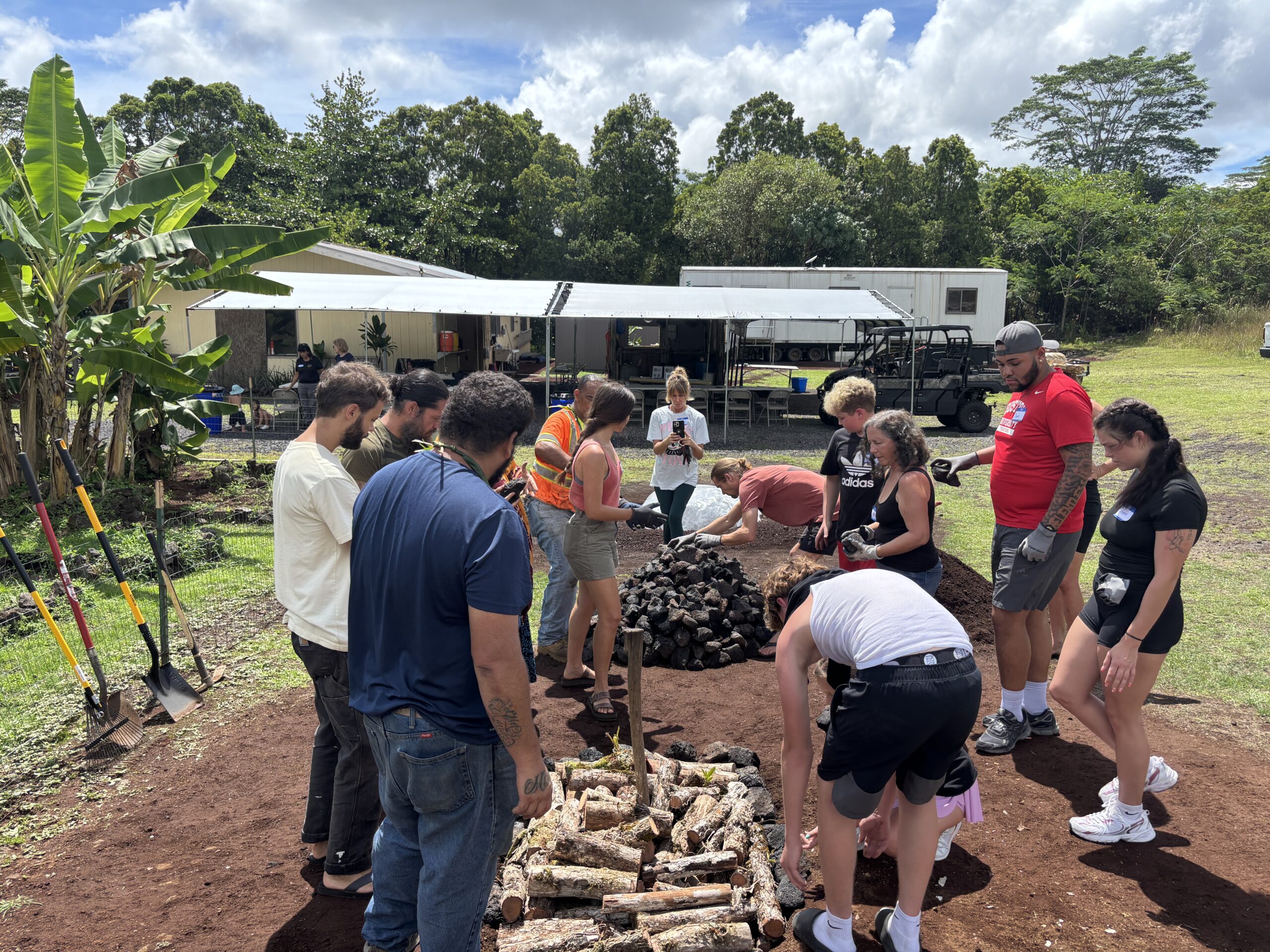
Guests can learn how to make a traditional imu during the Imu Mea ʻAi Food Tour on Hawaiʻi Island. Photo courtesy of Imu Mea ʻAi.
The Locavore Store – For over 11 years, The Locavore Store has been the place in Hilo to find just about everything locally-grown on Hawaiʻi Island under one roof. You’ll find kalo, ‘uala, ‘ulu, mai’a and much more (their selection is super impressive). In addition to edible goods, the store also carries local skin care, apparel and gifts. What’s great for visitors is you can also purchase products from the store online.
Moon & Turtle – Chef and co-owner Mark Pomanski prepares Hawai‘i-Pacific dishes that are simultaneously elevated and humble at this beloved Hilo restaurant. Local ingredients, especially fresh seafood, drive the ever-evolving menu. You never know what Pomanski will be serving next, just prepare to be surprised and delighted.

The Locavore Store in Hilo carries products from over 270 local Hawaiʻi vendors. Photo courtesy of The Locavore Store.
___________________________________________________________________________
Where Will You Go To Eat Real Hawaiian Food?
Now that you know more about Hawaiian canoe crops and where to taste them, all that’s left is to go eat!
Learning about Hawaiian culture through food will make your vacation meaningful and unforgettable. With options on multiple islands, along with this guide, you can find real Hawaiian food for a more authentic experience.
Happy eating!
